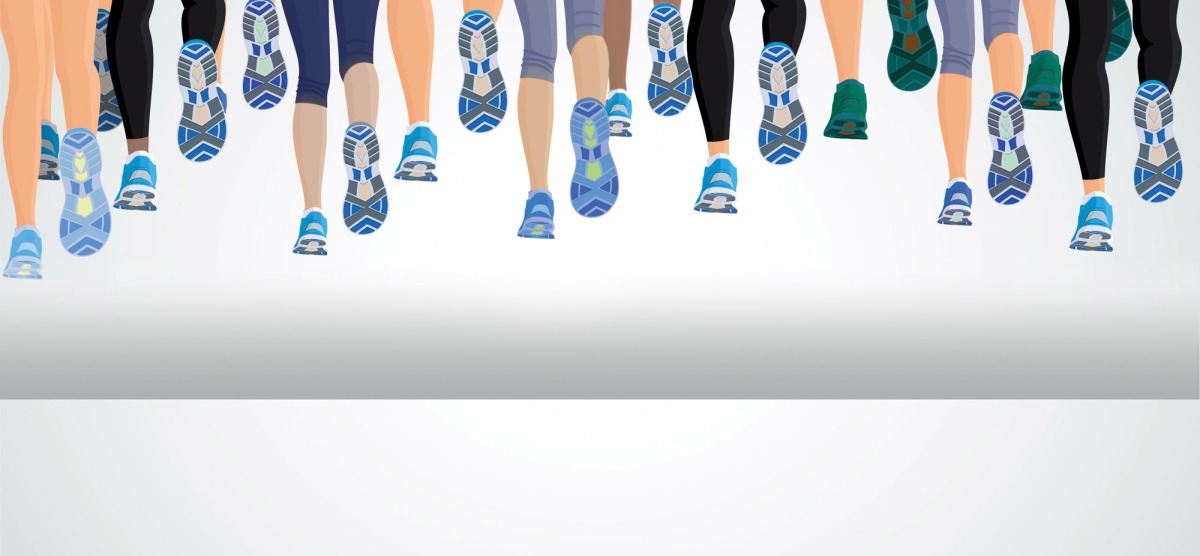
Joy Through Exercise
On the “FitMawrter” Facebook page, late-blooming athletes are having fun while getting stronger.
"I owe my Bryn Mawr degree to Jen Shillingford,” says Irene Segal Ayers ’82, who credits the compassionate former director of athletics for letting the “overweight, chain-smoking English major” fulfill her entire gym requirement during second semester, senior year.
Now an Ironman triathlete, marathoner, hiker, and backpacker, Ayers quit smoking by temporarily switching to candy (“For the health effects of obesity to be as bad as smoking, you’d need to weigh over 300 pounds,” she reasoned), then dropped the weight she gained and gradually got fit by doing what she loves.
“I’ve never liked team sports—but as a kid, I loved biking, swimming, and running,” she says. Exercise eased the stress of career and family demands as Ayers jogged, then ran, then raced her way to middle age. Training for her first triathlon, she rode her bike in the hardest gear “because I didn’t know how to change gears! This was a rediscovery.”
“I don’t care what other people think, I don’t care if I don’t look good in Spandex, and I don’t care if I finish in last place."
The FitMawrter Facebook group is full of such women, rebooting their personal strength and joy through exercise. If the group had a motto, it might be Ayers’s response to my query, loosely translated from Latin: “I don’t care what other people think, I don’t care if I don’t look good in Spandex, and I don’t care if I finish in last place. [No, that's not true. I still care, but I’ve learned to adjust my goals—a last-place finish in an Ironman is still an Ironman finish].” To a desk-dweller like me, their resolve is impressive. But what’s surprising is the source of the group’s camaraderie: a contagious sense of humor and fun.
“At this age, it doesn’t matter if I look foolish. It's about having fun while getting stronger,” says Carol Bergstresser Quick ’90, who reinvented herself from an “uncoordinated and introverted” college student terrified of public speaking to a fitness instructor leading classes in weight lifting, yoga (with Pilates), and indoor cycling at Gold’s Gym. For the former computer programmer with a master’s degree in public policy, her son’s long-term illness necessitated a job with flexibility. “Getting certified in Body Pump was harder for me than graduate school!” she says. “This is a new way to use my brain.”
Of the mental hurdles she cleared to join her first group fitness class—and later, to lead—she says, “I had so many misconceptions about what fitness was and what a fit person looks like. I thought, I can’t be on stage (teaching) unless I look better than I look now! That was a complete fallacy. I’m not graceful, but I’m willing to try anything. I’ve found power being in front of people and having them listen to me.”
“My happiness is cued to swing dancing,” says Cynthia Burr Ramsey ’92, who took it up at 40, while dating after her divorce. An accomplished clarinetist and Night Owls vocalist in college, Ramsey couldn’t suppress her impulse to move while playing or singing. “I’m enthusiastic, loud, and vivacious,” she says. “I’ve been a dancer all along—I just didn’t realize all the different types of bodies dancers could have.”
Devoted to a style called West Coast Swing, she prefers this “conversational” form to ballroom dance, in which the “lead” gives directions that the “follow” executes. The “intensely social connections” swing dance inspires remind her of her a cappella days; long experience listening and responding as voices blend to create sound gives her sure footing as she communicates physically through dance.
“The quicker you and your partner can pick up on what you’re telling each other with your bodies, the more fun it is,” she says.
Now, managing a new job, coursework towards an MBA, a relationship, and family demands, Ramsey still tries to dance every week. “My great epiphany was understanding how dance affects me socially and psychologically. This is where I find the most joy and freedom.”
Midlife offers an opportunity to refit our lives to our aspirations; to borrow a computer metaphor, new values won’t be in force until we reboot. “I used to think that I had to do something really big and important, but I didn’t know what that was,” says Carol Quick, whose clients convey her work’s significance with their gratitude.
For Cindy Ramsey, the satisfaction dance brings isn’t an end but a means to measure engagement she seeks off the dance floor. She speaks for many of us when she says, “My life is a search for the kind of intense, joyful connection I first found at Bryn Mawr.”
Published on: 09/16/2017